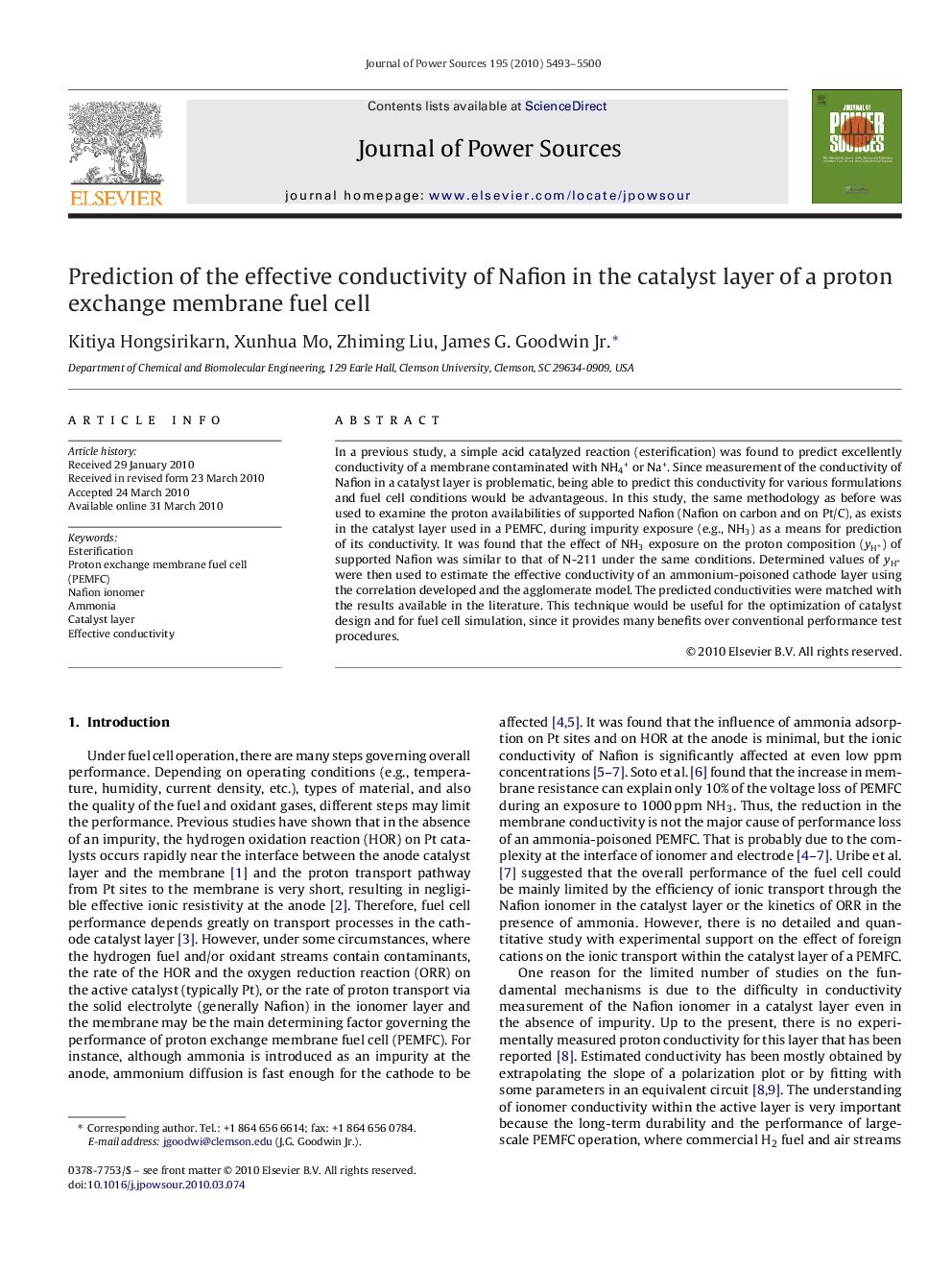| Article ID | Journal | Published Year | Pages | File Type |
|---|---|---|---|---|
| 1293710 | Journal of Power Sources | 2010 | 8 Pages |
In a previous study, a simple acid catalyzed reaction (esterification) was found to predict excellently conductivity of a membrane contaminated with NH4+ or Na+. Since measurement of the conductivity of Nafion in a catalyst layer is problematic, being able to predict this conductivity for various formulations and fuel cell conditions would be advantageous. In this study, the same methodology as before was used to examine the proton availabilities of supported Nafion (Nafion on carbon and on Pt/C), as exists in the catalyst layer used in a PEMFC, during impurity exposure (e.g., NH3) as a means for prediction of its conductivity. It was found that the effect of NH3 exposure on the proton composition (yH+yH+) of supported Nafion was similar to that of N-211 under the same conditions. Determined values of yH+yH+ were then used to estimate the effective conductivity of an ammonium-poisoned cathode layer using the correlation developed and the agglomerate model. The predicted conductivities were matched with the results available in the literature. This technique would be useful for the optimization of catalyst design and for fuel cell simulation, since it provides many benefits over conventional performance test procedures.
